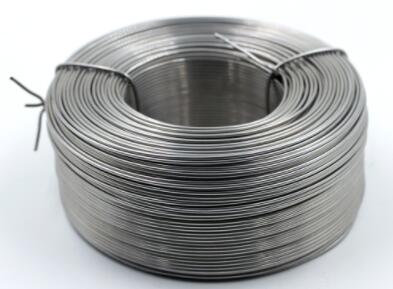Understanding Cold Drawn Steel Wire Characteristics and Applications
Cold drawn steel wire is a versatile and essential product in various industries due to its excellent mechanical properties and surface finish. Cold drawing is a manufacturing process that involves pulling the steel wire through a die at room temperature to reduce its diameter and improve its strength and overall quality. This article explores the characteristics, production process, advantages, and applications of cold drawn steel wire.
Characteristics of Cold Drawn Steel Wire
Cold drawn steel wire exhibits a range of distinct characteristics that make it superior to other types of wire. One of its primary features is the increased tensile strength resulting from the cold drawing process. As the wire is drawn to a smaller diameter, its grain structure is refined, leading to improved hardness and tensile properties. This enhancement allows the wire to withstand higher loads without deforming, making it suitable for demanding applications.
Another notable characteristic of cold drawn steel wire is its smooth surface finish. The drawing process removes imperfections and produces a consistent diameter, ensuring high-quality aesthetics and performance. This smooth finish also reduces friction during application, which is crucial in machinery and construction elements.
Production Process
The production of cold drawn steel wire involves several key steps
. Initially, a coiled steel rod, typically made of carbon steel, is cleaned and prepared for drawing. The first step is to anneal the rod, which involves heating it to a specific temperature and then slowly cooling it down to relieve stress and enhance malleability.Once the rod is prepared, it is fed into a die and pulled through, reducing its diameter. Depending on the required specifications, multiple passes through progressively smaller dies may be necessary. As the wire is drawn, it can be subjected to additional processes such as surface coating or tempering to enhance properties like corrosion resistance or flexibility.
cold drawn steel wire

Advantages of Cold Drawn Steel Wire
There are several advantages to using cold drawn steel wire compared to other wire forms. The increased tensile strength makes it an excellent choice for applications that demand durability and reliability. Its superior surface finish not only contributes to its aesthetic appeal but also ensures a longer lifespan in operations involving repeated friction or wear.
Moreover, cold drawn steel wire is highly versatile and can be produced in various diameters and grades to meet specific requirements, from automotive components to construction materials. It is compatible with additional processing techniques, such as coating and galvanizing, further expanding its applicability across various sectors.
Applications
The applications of cold drawn steel wire are extensive and diverse. In the automotive industry, it is commonly used for manufacturing springs, cables, and reinforcement bars due to its high strength and resistance to fatigue. Similarly, in the construction sector, it plays a crucial role in the production of prestressed concrete, where high-strength wires are essential for maintaining structural integrity.
In addition, cold drawn steel wire is also widely utilized in the manufacturing of wire ropes, mesh products, and various fasteners. Its properties make it ideal for applications requiring rigorous safety standards, such as in lifting and rigging equipment.
Conclusion
Cold drawn steel wire is a fundamental component in many industrial applications, offering remarkable strength, durability, and versatility. Its unique characteristics, stemming from the cold drawing process, make it an indispensable material in sectors ranging from construction to automotive manufacturing. As industries continue to evolve and demand higher performance from materials, the importance of cold drawn steel wire will only grow, marking it as a staple in modern manufacturing.

















